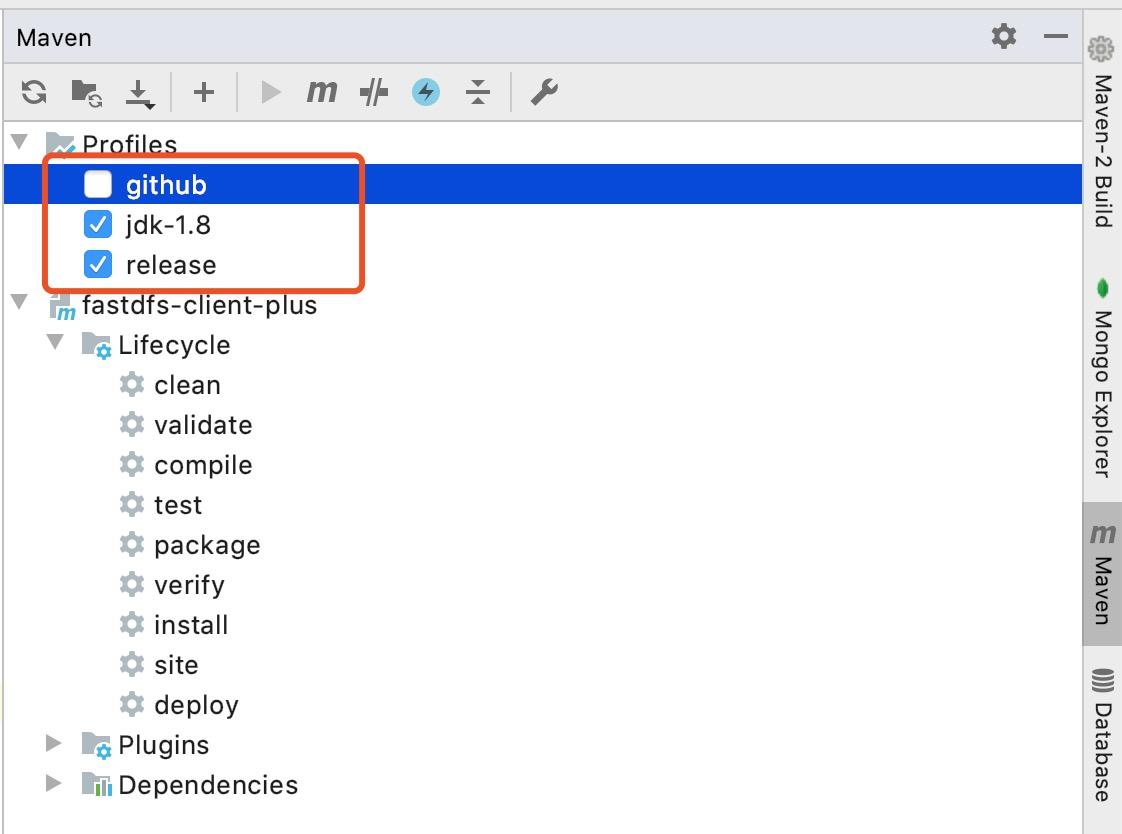关于Maven管理jar包依赖出现的问题 以及Maven仓库的配置方法
现在很多 Java 程序员都是直接用 IDEA 来创建 Maven 项目,但是应用 Maven 的过程,多多少少会碰到一下问题。下面,我将简单为大家说一下在使用 Maven 管理 jar 包依赖,会遇到的一些情况,以及如何使用配置 Maven 的仓库。
在项目中使用Maven管理jar包依赖,往往会出现以下状况:
1、国内访问maven默认远程中央镜像特别慢;
2、使用阿里的镜像替代远程中央镜像;
3、阿里云镜像中缺少部分jar包;
4、同时使用私有仓库和公有仓库;
针对以上情况,我们就需要让Maven支持多仓库配置。
单独仓库配置
当只配置一个仓库时,操作比较简单,直接在Maven的settings.xml文件中进行全局配置即可,以阿里云的镜像为例:
<mirrors>
<mirror>
<id>alimaven</id>
<name>aliyun maven</name>
<url>http://maven.aliyun.com/nexus/content/groups/public/</url>
<mirrorOf>central</mirrorOf>
</mirror>
</mirrors>
只用新增一个mirror配置即可。要做到单一仓库,设置mirrorOf到*。
mirrorOf中配置的星号,表示匹配所有的artifacts,也就是everything使用这里的代理地址。上面的mirrorOf配置了具体的名字,指的是repository的名字。
镜像配置说明:
1、id: 镜像的唯一标识;
2、name: 名称描述;
3、url: 地址;
4、mirrorOf: 指定镜像规则,什么情况下从镜像仓库拉取。其中,
*: 匹配所有,所有内容都从镜像拉取;
external:*: 除了本地缓存的所有从镜像仓库拉取;
repo,repo1: repo或者repo1,这里的repo指的仓库ID;
*,!repo1: 除了repo1的所有仓库;
多仓库配置
那么针对多仓库的配置是否再多配置几个mirror就可以了?如此配置并不会生效。
正确的操作是在profiles节点下配置多个profile,而且配置之后要激活。
<profiles>
<profile>
<id>boundlessgeo</id>
<repositories>
<repository>
<id>boundlessgeo</id>
<url>https://repo.boundlessgeo.com/main/</url>
<releases>
<enabled>true</enabled>
</releases>
<snapshots>
<enabled>true</enabled>
<updatePolicy>always</updatePolicy>
</snapshots>
</repository>
</repositories>
</profile>
<profile>
<id>aliyun</id>
<repositories>
<repository>
<id>aliyun</id>
<url>http://maven.aliyun.com/nexus/content/groups/public/</url>
<releases>
<enabled>true</enabled>
</releases>
<snapshots>
<enabled>true</enabled>
<updatePolicy>always</updatePolicy>
</snapshots>
</repository>
</repositories>
</profile>
<profile>
<id>maven-central</id>
<repositories>
<repository>
<id>maven-central</id>
<url>http://central.maven.org/maven2/</url>
<releases>
<enabled>true</enabled>
</releases>
<snapshots>
<enabled>true</enabled>
<updatePolicy>always</updatePolicy>
</snapshots>
</repository>
</repositories>
</profile>
<profiles>
通过配置activeProfiles子节点激活:
<activeProfiles>
<activeProfile>boundlessgeo</activeProfile>
<activeProfile>aliyun</activeProfile>
<activeProfile>maven-central</activeProfile>
</activeProfiles>
此时如果是在Idea中使用了本地的Maven配置,那么在项目的Maven管理中会看到类似如下图中的profile选项。

打包时,勾选所使用的profile即可。如果使用Maven命令打包执行命令格式如下:
mvn -Paliyun ...
1.如果aliyun仓库的id设置为central,则会覆盖maven里默认的远程仓库。
2.aliyun的仓库也可以不用配置,直接在mirrors标签内配置一个镜像仓库,mirrors镜像仓库mirrorOf的值设置为central,则也可以实现覆盖默认的仓库。
项目中配置镜像
在项目中添加多个仓库,是通过修改项目中的pom文件实现的。
思路:在项目中pom文件的repositories节点(如果没有手动添加)下添加多个repository节点,每个repository节点是一个仓库。
配置效果如下:
<!-- 特殊maven仓库 -->
<repositories>
<repository>
<id>central-repo1</id>
<name>Maven Repository Switchboard</name>
<url>http://repo1.maven.org/maven2/</url>
<layout>default</layout>
<releases>
<enabled>true</enabled>
</releases>
</repository>
</repositories>
这里的id就是mirrorOf要使用的ID。
在实践的过程中发现单单配置该仓库配置并不会生效,需要同时在setting.xml中定义一个mirrorOf为central-repo1的仓库配置,与该配置的id对照。
setting.xml中的对照配置如下:
<mirror>
<id>central</id>
<name>Maven Repository Switchboard</name>
<url>https://repo1.maven.org/maven2/</url>
<mirrorOf>central-repo1</mirrorOf>
</mirror>
值得收藏的国内镜像
<mirrors>
<mirror>
<id>alimaven</id>
<name>aliyun maven</name>
<url>http://maven.aliyun.com/mvn/view</url>
<mirrorOf>central</mirrorOf>
</mirror>
<mirror>
<id>jboss-public-repository-group</id>
<mirrorOf>central</mirrorOf>
<name>JBoss Public Repository Group</name>
<url>http://repository.jboss.org/nexus/content/groups/public</url>
</mirror>
<mirror>
<id>ibiblio</id>
<mirrorOf>central</mirrorOf>
<name>Human Readable Name for this Mirror.</name>
<url>https://maven.aliyun.com/mvn/view</url>
</mirror>
<mirror>
<id>central</id>
<name>Maven Repository Switchboard</name>
<url>http://repo1.maven.org/maven2/</url>
<mirrorOf>central</mirrorOf>
</mirror>
<mirror>
<id>repo2</id>
<mirrorOf>central</mirrorOf>
<name>Human Readable Name for this Mirror.</name>
<url>http://repo2.maven.org/maven2/</url>
</mirror>
</mirrors>
到这里,这篇关于 Maven 项目中管理 jar 包依赖会遇到哪一些状况,以及如何配置 Maven 项目中的仓库的内容就介绍完了,想要了解更多相关 Maven 项目的其他内容,可以在W3Cschool站内搜索相关技术文章,希望本篇文章能够对大家的学习有所帮助。